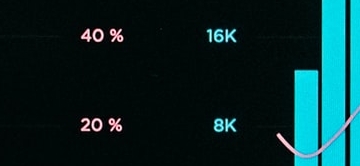There is justifiable excitement about the potential of using smartphone technology to help manage the process of relaxing lockdown while keeping the Covid-19 epidemic under control.1 There’s also justifiable concern – and the fear that hasty decisions taken now could dominate our lives for years to come. So how can we proceed? There are two very distinct approaches to using such technology, with very different benefits and risks, and one of them has been dominating the discussion so far. It is time to give a hearing to the second.
The reason why smartphone technology has such potential is that lockdowns are indiscriminate and damaging ways to achieve a purpose we can all agree is vital. Stopping the spread of the disease requires reducing R0 to below one – that’s the number epidemiologists use to measure the average number of people infected by each carrier of the virus. To do that requires each carrier to be isolated as far as possible from the rest of the population.
But for every infected person who is being isolated under a lockdown policy, at any moment a large number of completely healthy people are being isolated as well. Call that number M, for ‘multiple’. Since we don’t know who’s infected and who isn’t, that’s inevitable at this stage of the pandemic. But it’s also massively disruptive – M is probably around 50 and may be more at early stages of the outbreak.2 That’s 50 healthy people taken out of circulation for every one infected person we can isolate.3 There must be ways to reduce that number. Here’s where technology comes in.
A crucial determinant of R0 in epidemiological models is the probability that a random individual transmits the virus to a healthy person who doesn’t have immunity. Think of this probability as depending on two things. The first is the probability that the individual is infected – call that ϕ. This will depend on many aspects of the individual’s recent history, including the people they have interacted with and their probability of being infected. The second thing that matters is the type of interaction the two people have – do they shake hands, keep a distance, eat in a restaurant together, take a walk in the park, drink glühwein from the same glass? Different actions have a different transmission risk – call that A. So if these variables were independent, any person’s risk of infecting a healthy person would be equal to their ϕ multiplied by the A of the action they engage in.4
What’s complicated about these two variables is that they’re not independent of each other.5 In fact they’re typically positively correlated – the people most likely to be infected also tend to engage in the most high-risk activities. Think of politicians, addicted to shaking hands. And the most sociable among ordinary citizens, who are most likely to be carriers of the virus, tend to be those most devoted to eating in pubs and restaurants, where they are most likely to spread the virus if they have it.
This correlation raises, sometimes dramatically, the average transmission risk compared to when the two variables are independent. There’s evidence that some ‘super-spreader’ events like religious festivals and skiing holidays have played an important part in raising the transmission rate of the virus in the early weeks of the pandemic (Kay 2020). Such events brought together some high-infection-risk individuals with some very high-transmission-risk activities. The objective of public policy should instead be to make the correlation negative – it’s the highest-risk individuals who should be restricted to the lowest-risk activities.6
The main way in which smartphone technology has been proposed so far has been for contact-tracing – finding ways to identify rapidly who might have been infected by every person who tests positive for the disease. Think of this as a way to get very high precision on everyone’s value of ϕ. The idea is that if we have a high level of confidence as to who is carrying the disease and who isn’t, we can distinguish two types of actions: very low A actions (that means quarantine) for those likely to be infected, and relative freedom for everyone else.
To get the necessary high precision on ϕ requires keeping a very detailed running record, say using Bluetooth or equivalent technologies, of everyone with whom the smartphone user has been interacting. This record needs to be kept for at least two weeks at a time, which corresponds to the maximum incubation period of the infection. The record is used to activate instructions to the user whenever one of their contacts tests positive for the virus.
Contact-tracing doesn’t require smartphones – in fact, most of the contact tracing in countries that have used it extensively, such as Taiwan and South Korea, has used more traditional methods.7 But contact-tracing by smartphone could in principle work very well, and the current Chinese government is betting that it will. So are other people – such as an influential group at the Edmond J. Safra Center for Ethics at Harvard University (2020). And other governments are taking the idea seriously, including the French government.
So what are the risks? Some have to do with hacking of the information databases. Others have to do with governments using all this information about people’s movements to control populations for other purposes, ranging from terrorist activity to simple criticism of the government. Although inventive solutions are being developed to address these concerns, they are real concerns, and many people are aware of them. They could have a negative effect on the willingness of populations to go along with contact-tracing – but without such willingness the digital applications will be useless. They need a critical mass of coverage of the population to be able to function.8
There’s much less awareness of a different type of risk – malicious manipulation by other users.9 Imagine members of a football team want to prevent a star rival from playing against them in a forthcoming match. They know some people who are showing Covid-19 symptoms, and they offer to test them privately. Once someone tests positive they borrow the person’s smartphone and arrange for it to be brought inconspicuously to within a short distance of the player – at a press conference, say. Then they send the smartphone back to the owner and arrange for them to get an official test.
Or suppose a student wants to stop the summer exams from taking place in her high school. Her father is coughing badly, so one morning she purloins his phone (‘by mistake’) and placing it in her backpack, makes sure she passes close to as many teachers and other students as possible during the breaks between classes. If she’s lucky and her father tests positive, the school will have to close and cancel the exams. And best of all from her point of view, the rules of patient-doctor confidentiality mean nobody will ever know it was her.
These risks are inevitable in any system in which one person testing positive can put a significant number of other people into quarantine. Is there no alternative? Fortunately, there is.
The alternative approach can be implemented through what we would like to call ‘Activity Applications’. Think of these as trying to do something more modest than getting high precision on ϕ (the probability that someone is infected in the light of all their past history of interactions with others). Instead, they try to estimate some indicators of the user’s risk based on relatively public information that changes only slowly over time – their age, their residential address, where they work, and perhaps some indicator of vulnerability based on pre-existing health conditions (diabetes, for example).
These indicators could be supplemented by other information users give on an opt-in basis. If they show a negative antibody test, for example. Or if they want to take a long-distance plane flight they might opt to quarantine wearing a connected wristband until the morning of the flight, and display on the app a digital certificate. All of this information would enable users to be sorted into risk categories based on transparent criteria. This measure of risk – call it θ – is not as good as ϕ, but it’s much better than nothing – and much easier to collect.
Most important of all – here’s the key innovation – measuring θ can be used to implement a much more discriminating set of activities than the contact-tracing apps typically envisage. Around the world, restaurants, parks, beaches and all kinds of public spaces are closed because it’s hard to manage how people interact within them. Imagine the main city park could open again – and most of the time there would be a limit on numbers, counted at the turnstiles, with access only to those who score as low-risk on the basis of θ.
Bluetooth technology cannot be used to enforce precise rules on social distancing (Bechade 2020). But it can in principle alert users if there are large numbers of others in their vicinity. And it may be able to alert the park management if there is significant congestion in parts of a park, which can then be dealt with through direct observation (and which then may lead to review of the numbers admitted at any one time). If data are stored on individual phones and there is no GPS-tracking, privacy can be safeguarded.10 No record of who people went to the park with, no history there.
The access rules could be adapted to restaurants, concert venues, beaches, workplaces. They might make access conditional on behavioural rules such as wearing masks, in some venues. Local and municipal authorities would have to vet venues, just as health and safety inspectors do now. The rules would undoubtedly change over time, as we learn more about the disease and as the pandemic itself evolves. The apps would need to announce rule changes clearly and intuitively through notifications or on the welcome screen.
Even some high-risk people, or people whose risk of being infected is low but whose vulnerability is high, could have separate times set aside for them. Imagine that shops opened for an hour at the beginning of the day, every other day, just for a more limited number of vulnerable elderly users. The exceptions would have to be simple, and understandable. But they could help to reassure the most vulnerable that they are not being forgotten.
There are many details that would have to be worked out about such a scheme. How many types of digital app could there be? Would anyone be able to propose a novel app provided it met certain standards? Can we be really sure that individual phone data cannot be surreptitiously monitored? Might such a system have a beneficial effect in rural areas where population densities are lower and restrictions could be less severe?
Still, the main advantage of such a scheme is that it is modest, and works bottom-up, incrementally, on an opt-in basis for those who want to enjoy its advantages. Apps that work well can be scaled up,11 and those that face unexpected problems can be withdrawn without threatening the success of the whole venture. If more ambitious contact-tracing apps really do manage to win public acceptance, our scheme would gradually wither on the vine. But in the meantime, many people would have been able to enjoy a respite from an undiscriminating lockdown that keeps M people at home for every infected person who really needs to be.
Copyright: VOXEU.ORG
References
- R Baldwin and B Weder di Mauro (2020), Mitigating the COVID Economic Crisis: Act Fast and Do Whatever It Takes, a VoxEU ebook.
- Bechade, C (2020), “StopCovid : le Bluetooth, une technologie de "contact tracing" bancale” Les numeriques.com, 21 April.
- Bonnetain X et al. (2020), “Le traçage anonyme, dangereux oxymore Analyse de risques à destination des non-spécialistes”.
- Ichino A, G Calzolaru, A Mattozzi, A Rustichini, G Zanella and M Anell (2020), “Transition steps to stop Covid19 without killing the world economy” VoxEU.org, 25 March.
- J Kay (2020), “Covid-19 superspreader events in 28 countries: critical patterns and lessons”, Quillette.com, 23 April.
- Mesnard , A and P Seabright (2009), “Escaping infectious diseases through migration? Quarantine measures under incomplete information about infection risk”, Journal of Public Economics 93: 931-938.
- J Safra Center for Ethics at Harvard University (2020), “Roadmap to pandemic resilience”.
- Stock, J (2020), “Data needs for shutdown policy”, VoxEU.org, 04 April.
- Volk, S (2020), “Tracing apps can help halt the coronavirus but most of us won’t cooperate unless everyone does”, ABC News, 23 April. https://www.abc.net.au/news/2020-04-23/tracing-apps-tracetogether-corona....
Endnotes
- 1 Complementary policies for diminishing the economic costs of lockdown are discussed by Ichino et al. (2020).
- 2 M is equal to the inverse of the proportion of currently infected people among those confined, minus 1. Given the lack of data on infection rates (Stock, 2020), we have assumed a rate of around 2% here for illustrative purposes.
- 3 The large scale of this disruption is emphasised by several contributors to Baldwin and Weber di Mauro (2020).
- 4 If the variables were independent, the average of ϕ over the whole population would equal I, the proportion of people actually infected. And the average of A over the whole population would equal β, the average transmission risk.
- 5 Nor are they independent of the risk of meeting a susceptible person, a further complication which we ignore here.
- 6 Badly designed policies can even inadvertently increase the degree of positive correlation. Advance warnings of lockdowns or transport restrictions can bring the highest-risk individuals rushing to airports and train stations where they are more likely to transmit the virus (Mesnard and Seabright 2009).
- 7 In each country some use has been made of tracking apps for individuals tested positive.
- 8 Singapore has launched a contact-tracing app for the general population called TraceTogether, which appears well designed to minimise security fears and has been used as a model for an app in Australia. At time of writing take up appears to be well below critical mass in both countries (Volk 2010).
- 9 See other examples (in French) illustrated by Bonnetain et al. (2020).
- 10 Alternatively, geo-fencing technologies could be used, but these would imply GPS or similar methods. Some users might feel this was worth the additional convenience, others might not. In our scheme they would be free to choose the version that suited them best.
- 11 An Italian app called Ufirst allows individuals in lockdown to book shopping times in supermarkets. This appears to be popular and could be extended to cover other venues or to differentiate users.




